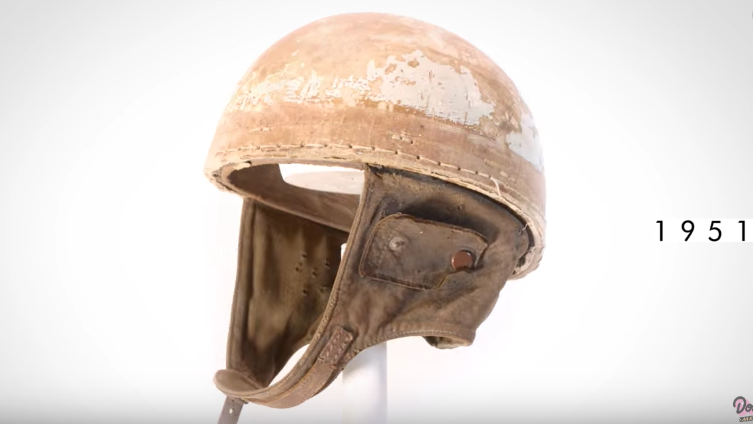
Video: this is how race helmets have evolved
Watch 100 years of head protection flash before your eyes
Protecting your head is quite important when racing. Obviously. And in the last hundred years, helmets have gone from effectively being a serviette strapped to your head, to being capable of being run over by a 55-tonne tank.
With new technology, lightweight materials and better designs, the way a helmet is made and the protection it offers has changed massively. With simple but incredibly effective advances, the chances of you walking away from an accident without a head injury now are far greater than ever before.
As the enlightening evolution video above shows, that wasn’t always the case.
See, crash helmets may have been compulsory in Formula One racing since 1953, but people were experimenting with lids way before that.
We’ve gone from soft cloth skull caps to harder-wearing leather, before realising something solid is probably a good thing. It was only in 1954 when the first mass-produced helmet was available. Since then, the rate of change has been amazing.
With full face being favoured, materials such as Nomex and the adoption of visors changed the game. Plus, with more aerodynamic designs, plus lighter, stronger materials being used, things have only gotten safer.
We’re still learning, though. The head and neck safety – HANS – device is a carbon fibre collar worn around the neck with the helmet loosely connected by two tethers. It allows for free movement of the head in normal operation but limits the amount of unrestrained movement the head and neck suffers in a crash. Yet this only became mandatory in Formula One in 2003.
And after Felipe Massa’s nasty crash in 2009 (where he was struck in the face with a spring in Hungary), helmet makers innovated to produce a ‘Zylon strip’ across the top of the visor to double the impact performance of the visor.
Even so, head and neck trauma remains the greatest single injury risk to racing drivers. So always remember your lid, kids.
Top Gear
Newsletter
Thank you for subscribing to our newsletter. Look out for your regular round-up of news, reviews and offers in your inbox.
Get all the latest news, reviews and exclusives, direct to your inbox.
Trending this week
- Car Review
BMW 1 Series
- Top Gear's Top 9
Nine dreadful bits of 'homeware' made by carmakers








